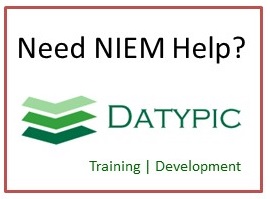gml:directedEdge
A gml:directedEdge property element describes the boundary of topology faces, the coBoundary of topology nodes and is used in the support of topological line features via the gml:TopoCurve expression, see below. The orientation attribute of type gml:SignType expresses the sense in which the included edge is used, i.e. forward or reverse.
Element information
Namespace: http://www.opengis.net/gml/3.2
Schema document: external/ogc/gml/3.2.1/topology.xsd
Type: gml:DirectedEdgePropertyType
Properties: Global, Qualified
Content
- gml:Edge [0..1]gml:Edge represents the 1-dimensional primitive. The topological boundary of an Edge (gml:directedNode) consists of a negatively directed start Node and a positively directed end Node. The optional coboundary of an edge (gml:directedFace) is a circular sequence of directed faces which are incident on this edge in document order. In the 2D case, the orientation of the face on the left of the edge is "+"; the orientation of the face on the right on its right is "-". If provided, the aggregationType attribute shall have the value "sequence". An edge may optionally be realised by a 1-dimensional geometric primitive (gml:curveProperty).
Attributes
| Name | Occ | Type | Description | Notes |
|---|---|---|---|---|
| orientation | [0..1] | gml:SignType | Default value is "+". | |
| xlink:type | [0..1] | xsd:string | Fixed value is "simple". from group xlink:simpleLink | |
| xlink:href | [0..1] | xsd:anyURI | from group xlink:simpleLink | |
| xlink:role | [0..1] | xsd:anyURI | from group xlink:simpleLink | |
| xlink:arcrole | [0..1] | xsd:anyURI | from group xlink:simpleLink | |
| xlink:title | [0..1] | xsd:string | from group xlink:simpleLink | |
| xlink:show | [0..1] | Anonymous | The 'show' attribute is used to communicate the desired presentation of the ending resource on traversal from the starting resource; it's value should be treated as follows: new - load ending resource in a new window, frame, pane, or other presentation context replace - load the resource in the same window, frame, pane, or other presentation context embed - load ending resource in place of the presentation of the starting resource other - behavior is unconstrained; examine other markup in the link for hints none - behavior is unconstrained | from group xlink:simpleLink |
| xlink:actuate | [0..1] | Anonymous | The 'actuate' attribute is used to communicate the desired timing of traversal from the starting resource to the ending resource; it's value should be treated as follows: onLoad - traverse to the ending resource immediately on loading the starting resource onRequest - traverse from the starting resource to the ending resource only on a post-loading event triggered for this purpose other - behavior is unconstrained; examine other markup in link for hints none - behavior is unconstrained | from group xlink:simpleLink |
| nilReason | [0..1] | gml:NilReasonType | from group gml:AssociationAttributeGroup | |
| gml:remoteSchema | [0..1] | xsd:anyURI | from group gml:AssociationAttributeGroup | |
| owns | [0..1] | xsd:boolean | Default value is "false". from group gml:OwnershipAttributeGroup |
Used in
- Type gml:FaceType (Element gml:Face)
- Type gml:NodeType (Element gml:Node)
- Type gml:TopoCurveType (Element gml:TopoCurve)
Sample instance
<gml:directedEdge> <gml:Edge gml:id="ID"> <gml:metaDataProperty> <gml:GenericMetaData>Any text, intermingled with: <!--any element--> </gml:GenericMetaData> </gml:metaDataProperty> <gml:description>string</gml:description> <gml:descriptionReference/> <gml:identifier codeSpace="http://www.example.com/">string</gml:identifier> <gml:name>string</gml:name> <gml:container> <gml:TopoSolid gml:id="ID">... </gml:TopoSolid> </gml:container> <gml:directedNode> <gml:Node gml:id="ID">... </gml:Node> </gml:directedNode> <gml:directedFace> <gml:Face gml:id="ID">... </gml:Face> </gml:directedFace> <gml:curveProperty> <gml:LineString gml:id="ID">... </gml:LineString> </gml:curveProperty> </gml:Edge> </gml:directedEdge>



